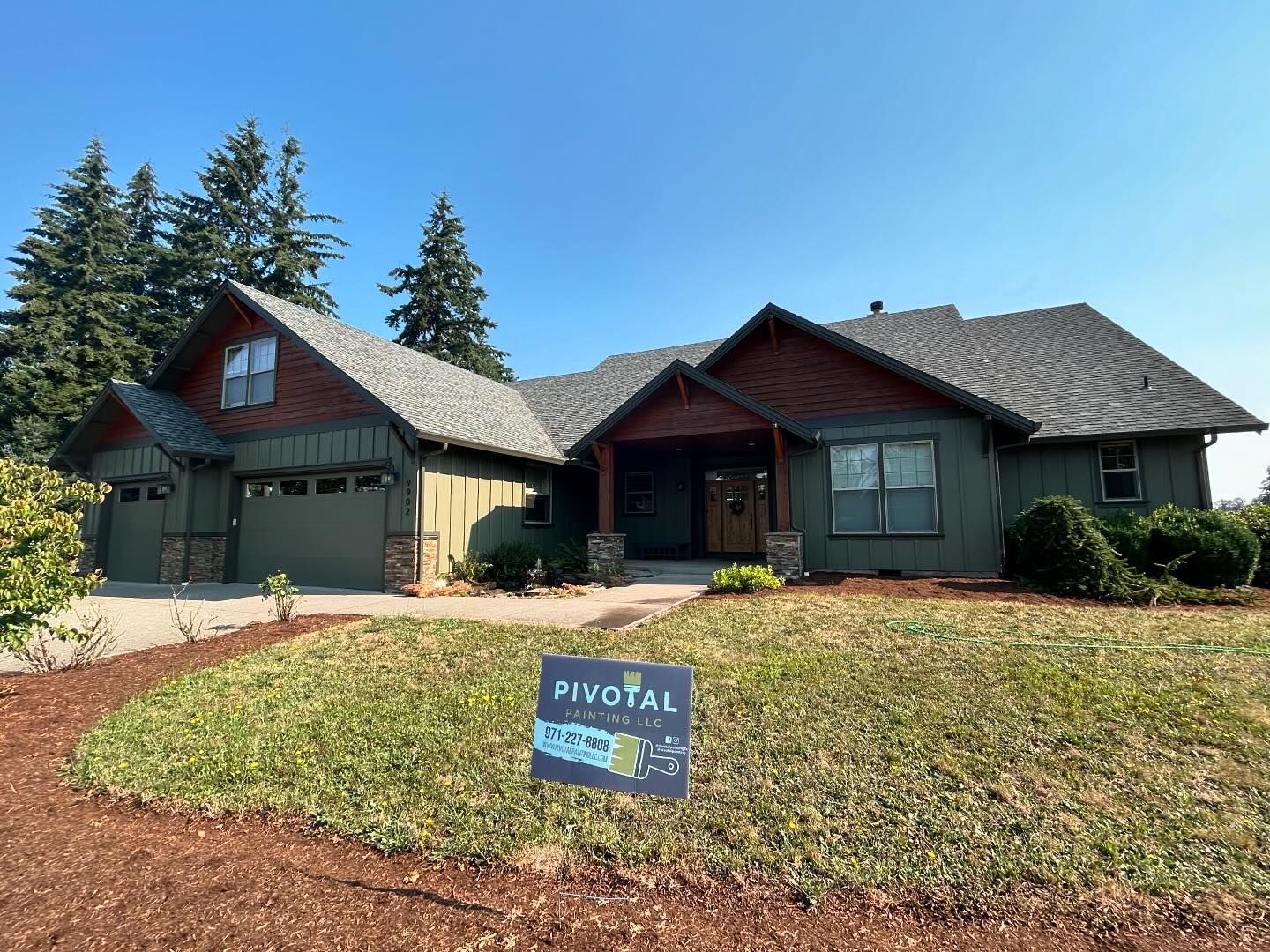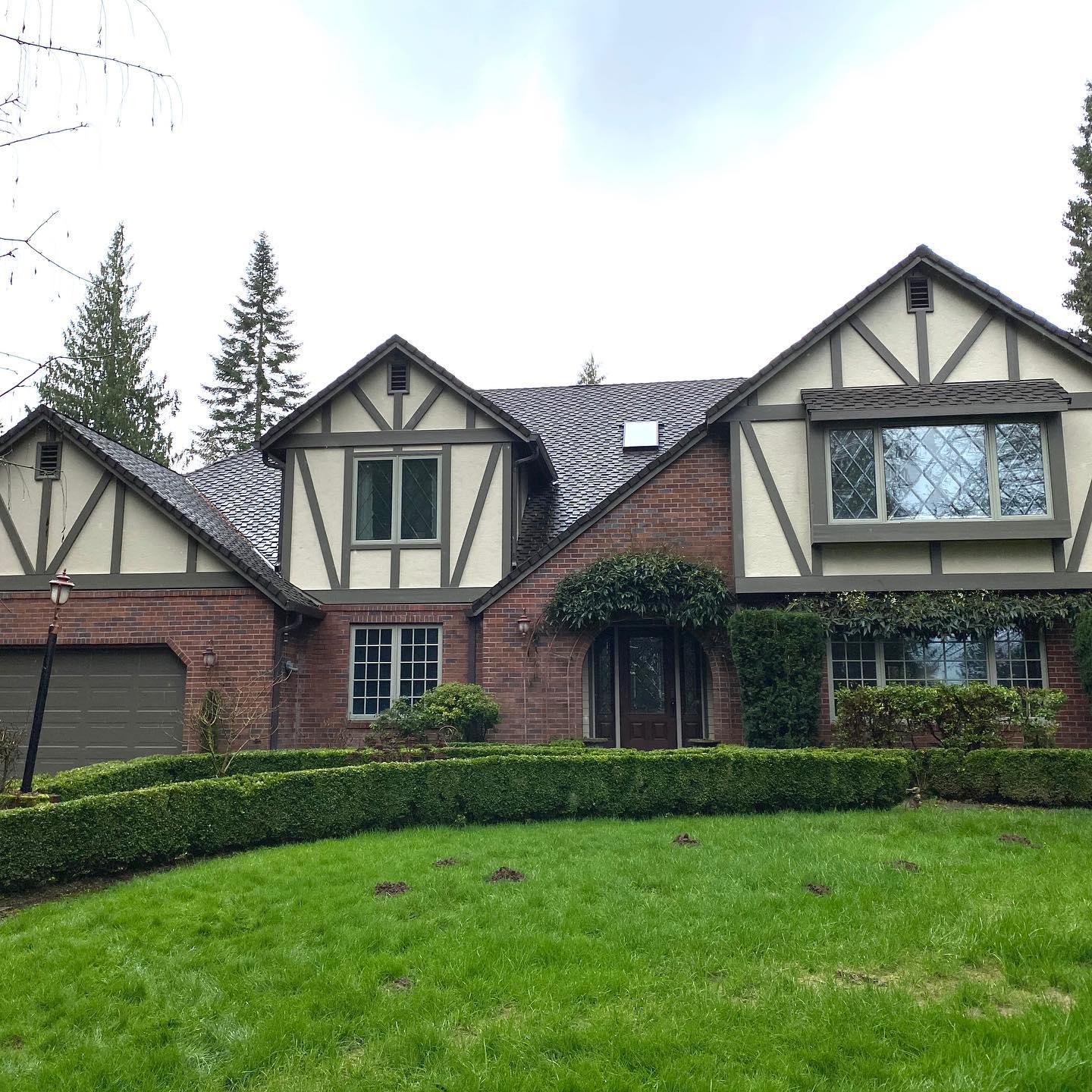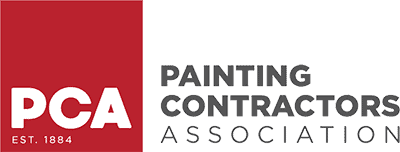If you want to know how to avoid bubbling paint in spring, especially during exterior house painting in Vancouver, WA, you’re in the right place. Spring feels like the perfect time to freshen up your home’s look, but the season can throw some curveballs that wreak havoc on your paint job. Ever looked at your siding a few weeks after painting and thought, why is my paint bubbling? You’re not alone.
Let’s break down the causes of paint bubbling and what you can do to avoid the headaches.
Key Takeaways
1. Painting Over Damp or Wet Surfaces
One of the biggest mistakes during spring house painting is painting when the surface hasn’t fully dried. Even if your siding looks dry, moisture could still be trapped underneath, especially after pressure washing. This is a fast track to bubbling paint exterior and even peeling.
Always wait at least 24–48 hours after washing your home before applying paint. If you’re painting after a rainy day or foggy morning, give the surface extra time.
Pro tip from the field: We once had to sand and repaint an entire garage wall after someone insisted it was “dry enough.” Lesson learned.

2. Painting Too Early in Spring
Spring can be tricky in the Pacific Northwest. One day it’s sunny; the next, we’re dodging a surprise shower. If you’re wondering, can rain cause exterior paint to bubble?—yes, it absolutely can.
The best time to paint exterior walls is when temperatures stay consistently above 50°F and humidity stays low. Painting while the weather’s unpredictable is risky.
If you’re planning exterior house painting in early spring, keep an eye on the forecast. We recommend a solid 3-day window of dry, mild weather for a reliable finish
3. Using the Wrong Paint for the Weather
Ever ask, why does paint bubble in humid weather? It often comes down to using the wrong product.
Spring humidity levels can mess with paint as it dries, especially if it’s not formulated for outdoor use. Exterior-specific paints, especially acrylic-based ones, tend to do better under moisture-prone conditions. Choose breathable paint with strong adhesion qualities.
If you’re painting wood or stucco, make sure you’re using a product made specifically for that material. That way, you’ll avoid paint bubbling on stucco or wood siding.
4. Rushing the Dry Time Between Coats
It’s tempting to move quickly, especially with busy schedules. But if you slap on a second coat too soon, paint blistering and bubbling can occur.
Spring air might feel perfect, but drying times depend on more than just temperature. High humidity or overcast skies slow things down. Always check your paint’s recommended dry time—and give it a little extra if you can.
Remember: how to avoid bubbling paint in spring often comes down to patience.

5. Skipping Primer When It’s Needed
We see this all the time. Homeowners think they can skip primer and save a step, but this can lead to disaster—especially on patchy surfaces, raw wood, or chalky siding.
How to prep walls to prevent bubbling? Start with a high-quality primer. It creates a stable base, evens out surface absorption, and helps the paint stick better.
If you’ve got siding that’s faded or previously peeling, primer isn’t optional—it’s the foundation of a long-lasting paint job.
6. Poor Surface Prep
This is the one mistake that snowballs into multiple problems. Dirt, mildew, pollen, and even leftover caulk can mess with how your paint adheres. And if you skip sanding or cleaning thoroughly? You’ll likely see paint bubbling, cracking, or peeling.
A proper prep day makes or breaks your outcome. Clean, sand, scrape, and rinse. Then let it dry fully. Paint prep for spring might take longer than you expect—but trust us, it’s worth every minute.

7. Hiring a Painter Who Cuts Corners
Not every exterior house painter is ready to handle house painting in humid weather. Some are more focused on speed than quality.
We’ve stepped in more than once after rushed jobs that didn’t account for the forecast or skipped prep altogether. The result? Clients asking us how to fix bubbling paint within weeks.
If your painter isn’t checking the weather, using primer, or talking about moisture levels, that’s a red flag.
Spring Weather Means You’ve Got to Paint Smart
We get it. You want your home to look fresh, clean, and ready for the warmer months. But exterior paint problems like bubbling, peeling, or blistering usually come down to prep, timing, and product choice.
Here’s a quick checklist for how to avoid bubbling paint in spring:
How to Avoid Bubbling Paint in Spring? Pivotal Painting is Here to Help!
If you’re tired of paint peeling, mystery bubbles, or short-lived results, it might be time to call the pros. At Pivotal Painting, we know how spring weather affects your home’s exterior—and we plan for it every step of the way.
We handle exterior house painting across Vancouver, Ridgefield, and Battle Ground, WA with care, prep, and solid communication. You get beautiful, lasting results without the stress.
Call us today at 360-230-7994 for a FREE estimate and let’s paint your spring right.


